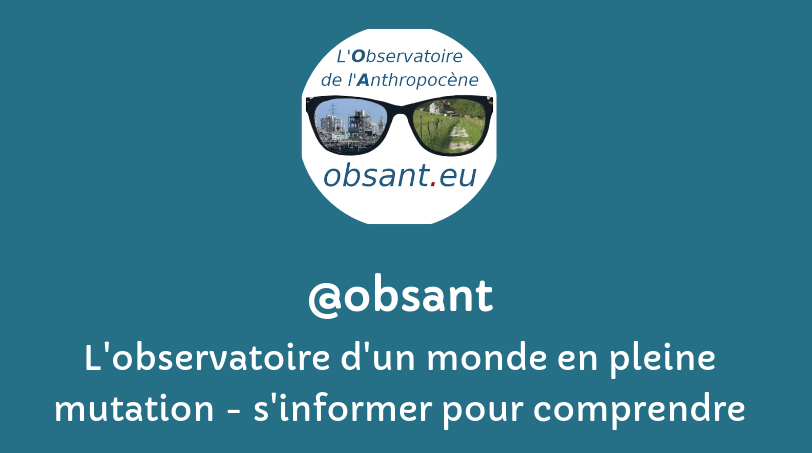Les champs auteur(e)s & mots-clés sont cliquables. Pour revenir à la page, utilisez le bouton refresh ci-dessous.
filtre:
carbone
CO2 in air hit new high last year, with scientists concerned natural land and ocean carbon sinks are weakening
This article examines the technocentric bias that characterizes climate mitigation literature, focusing on the reports of the IPCC's Working Group III. This bias stems from structural features of the scientific field that prioritizes innovation, leading to the overrepresentation of technological solutions in climate research. Funding mechanisms further reinforce this tendency by incentivizing collaboration with industrial R&D, creating a self-reinforcing loop in which scientific authority and industrial interests converge. The IPCC's institutional positioning—as a policy-relevant yet politically cautious body—amplifies this dynamic by favoring allegedly “cost-effective” technological pathways that lack practical feasibility.
Forests have historically acted as a reliable planetary thermostat. They regulate Earth’s temperature by removing carbon dioxide (CO2) from the atmosphere and locking it in trees, roots and soil — carbon that is emitted if trees are cut down. In a typical year, forests and other vegetation absorb roughly 30% of the carbon that humans emit from burning fossil fuels — a vital climate service performed at virtually no cost by trees around the world, from tropical rainforests to temperate and boreal forests.
New research reveals Earth's natural carbon sink nearly collapsed in 2024, absorbing almost zero human CO₂ emissions.
The startup Gigablue announced with fanfare this year that it reached a historic milestone: selling 200,000 carbon credits to fund what it describes as a groundbreaking technology in the fight against climate change . But outside scientists frustrated by the lack of information released by the company say serious questions remain about whether Gigablue’s technology works as the company describes. Their questions showcase tensions in an industry built on little regulation and big promises — and a tantalizing chance to profit.
Thousands of Greenland's crystal-clear blue lakes have turned a murky brown thanks to global warming — and the worst part is that they've started emitting carbon dioxide. Record heat and rain in 2022 pushed the lakes of West Greenland past a tipping point, so rather than absorbing carbon dioxide (CO₂), they began to emit it into the atmosphere, according to a new study.
Natural sinks of forests and peat were key to Finland’s ambitious target to be carbon neutral by 2035. But now, the land has started emitting more greenhouse gases than it stores
In 2023, the CO2 growth rate was 3.37 ± 0.11 ppm at Mauna Loa, 86% above the previous year, and hitting a record high since observations began in 1958[1], while global fossil fuel CO2 emissions only increased by 0.6 ± 0.5%[2,3]....
A carbon bomb is any fossil fuel extraction project that will generate more than one gigatonne of carbon dioxide (1GtCO2) over its remaining life.
CarbonBombs.org is a tool to follow the evolution of carbon bombs in the world.
Human activities are threatening to push the Earth system beyond its planetary boundaries, risking catastrophic and irreversible global environmental change. Action is urgently needed, yet well-intentioned policies designed to reduce pressure on a single boundary can lead, through economic linkages, to aggravation of other pressures. In particular, the potential policy spillovers from an increase in the global carbon price onto other critical Earth system processes has received little attention to date. To this end, we explore the global environmental effects of pricing carbon, beyond its effect on carbon emissions. We find that the case for carbon pricing globally becomes even stronger in a multi-boundary world, since it can ameliorate many other planetary pressures. It does however exacerbate certain planetary pressures, largely by stimulating additional biofuel production. When carbon pricing is allied with a biofuel policy, however, it can alleviate all planetary pressures. In the light of nine Earth Syst
Only if there is a fundamental change in the way we manage land we can reach the targets of climate-change mitigation, avert the dramatic loss of biodiversity and make the global food system sustainable.
Humanity is not on track to avoid the deadliest effects of climate change, according to University at Buffalo researcher Holly Jean Buck. "Our plans are not adequate to meet the goal of limiting the Earth's temperature increase to no more than 1.5℃ by 2050," said Buck, Ph.D., assistant professor of environment and sustainability....
United Nations Secretary-General António Guterres made clear Monday that securing a livable planet depends on stopping the "bottomless greed of the fossil fuel industry and its enablers."
Carbon credits and offsets do not have a great record but the funds they raise are a vital part in fight against deforestation
Carbon offsets can help achieve emissions goals, some experts argue, while others say they are actively dangerous
Investigation into Verra carbon standard finds most are ‘phantom credits’ and may worsen global heating
Group says forcing polluters to store carbon dioxide underground is needed to help world reach net zero
Fossil fuel companies that want a free pass to keep pumping oil and gas are making wildly unrealistic promises about 'capturing' their emissions at sites of pollution, or removing them from the atmosphere at later date. But the science says drastic emission cuts are needed now if we are to stay within 1.5ºC warming. Thus ‘net zero’ policies are in reality 'not zero', and effectively guarantee that we’ll overshoot 1.5ºC, triggering catastrophic climate impacts which we have no reason to believe can be reversed by speculative and unproven ‘carbon removal’ technologies.
Energy watchdog’s Fatih Birol says shift away from coal in key regions needs to be made a global priority
![]()



